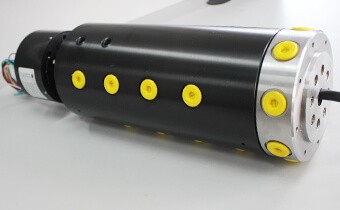A Rotary Union is an advanced, versatile mechanical device engineered to facilitate an efficient transfer of fluid (liquid or gas) from a stationary system to a rotating one without any hindrance to the rotation. Used across a wide spectrum of industries such as oil & gas, chemical processing, textiles, automotive, and aerospace, rotary unions offer unique solutions for safely managing complex fluid transfer needs.
Table of Contents
- What Is the Definition of Rotary Union?
- History of Rotary Union
- What Are the Applications of Rotary Union
- What Are the Different Types of Rotary Unions?
- Advantages and Disadvantages of Rotary Union
- What Are the Characteristics of Rotary Union
- What Is the Standard of Rotary Union
- Structure of Rotary Union
- What Material Is the Rotary Union Made Of?
- How to Choose the Right Rotary Union
- Where to Buy Rotary Union
- Some Important Things About Rotary Union
- Frequently Asked Questions
What Is the Definition of Rotary Union?
Rotary Unions (rotating unions, rotary joints, swivel joints, rotary coupling, fluid swivel, or fluid rotary union), is a mechanical device that provides a seal between stationary and moving systems, allowing for the flow of a fluid into and/or out of the rotating part. It enables the transfer of fluid under pressure or vacuum from a stationary inlet to a rotating outlet, preserving and isolating the fluid connection. This union allows for the movement of a fluid media – this could range from oil, coolant, water, and more – from a stationary device, such as a sink or an oil tank, to a moving device, like an engine or propeller.
In certain applications, a rotary union may also facilitate the transfer of fluid from a stationary supply into rotating machinery, such as a spinning drum heated by oil or chilled by water.
History of Rotary Union
The Rotary Union, an imperative industrial component, has a history that is often overlooked, yet it has played a significant role in the growth and transformation of various industrial sectors. This enabling device, designed to transfer fluid from stationary to rotating parts, has journeyed through over a century of innovation, refining, and adaptation to fit evolving industrial needs.
The earliest forms of rotary unions appeared in the late 19th to early 20th centuries, during the time of the Industrial Revolution when the need for an efficient way of transferring fluids to rotating machinery surged. Initially, they were simple in design and had a limited range of applications.
Over time, engineers realized the vast potential of rotary unions in various applications and embarked on a journey of relentless improvements and refinements. Through the decades, the design and technology of rotary unions have seen significant advancements, transitioning from simple, single-passage models to complex designs with multi-passage variants catering to diverse industrial needs.
The initial usage of rotary unions was primarily confined to the transfer of water and steam. With the advancement in design, newer versions capable of transferring different types of media such as coolant, heat transfer oils, hydraulic fluid, cutting oils, air, and even vacuum were developed.
Today, rotary unions have become an indispensable part of numerous sophisticated applications, from oil rigs to wind turbines, space crafts, and automated machinery, and continue to evolve with the ever-changing industrial landscape.
What Are the Applications of Rotary Union
The Rotary Union serves as a critical mechanical device in a wide variety of industries, performing a crucial role in the transfer of a range of fluids between stationary and moving parts. Its applications cut across numerous niches due to its versatility and extensive customizability.
Oil and Gas Industry
The implementation of rotary unions in the oil and gas industry has considerably improved operational efficiency, safety, and the overall effectiveness of various processes and types of machinery. These crucial components serve as sophisticated connectors, enabling the seamless transfer of fluids, such as crude oil, natural gas, and drilling mud, between stationary and rotating equipment under harsh conditions and high pressure. By providing a durable and reliable connection, rotary unions reduce the risk of leaks, contamination, and material degradation, which are all critical considerations in the demanding environment of oil and gas production. As a result, they substantially contribute to the industry’s ongoing optimization, innovation, and sustainability efforts.
Chemical Processing Industry
The integration of rotary unions in the chemical processing industry has resulted in significant enhancements in process efficiency, safety, and the durability of equipment. These specialized connectors are indispensable in facilitating the continuous transfer of various chemical substances, including corrosive liquids, gases, and steam, between stationary and rotating components. Thanks to their robust design and materials, rotary unions can withstand the harsh conditions prevalent in chemical applications, such as extreme temperatures and pressures. By ensuring a leak-free and consistent flow, they aid in minimizing waste, reducing contamination risks, and maintaining the integrity of produced chemicals. Therefore, they play an instrumental role in streamlining production processes and upholding quality standards within the chemical processing industry.
Radar Cooling Systems
The use of rotary unions in radar cooling systems has revolutionized the field of radar technology, providing innovative solutions to enhance signal efficiency and sustain performance under extreme conditions. These unique components act as crucial connectors for transferring heat dissipation agents, such as liquid coolant or gas, within the complex radar apparatus. By facilitating a secure and dynamic connection between stationary and rotating elements, rotary unions ensure an uninterrupted flow of cooling media, effectively managing thermal loads and preventing overheating in sensitive radar components. As such, their integration has led to advancements in radar system reliability, maintenance, and overall performance.
The printing and Packaging Industry
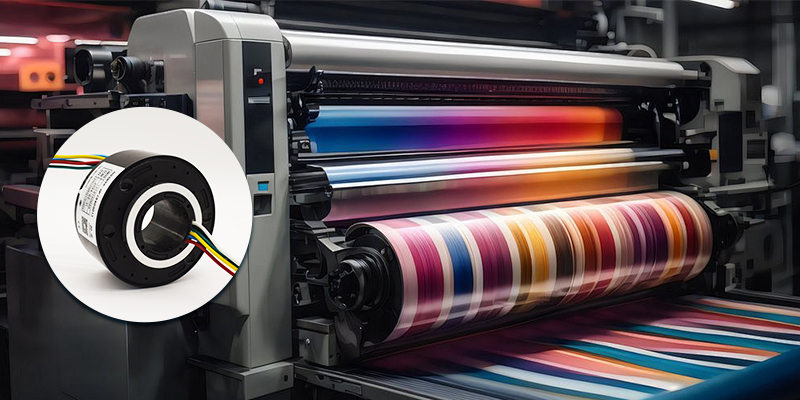
In the highly competitive domain of printing and packaging, the application of rotary unions has emerged as a game-changer, enhancing operational efficiency and product quality. These vital components serve as robust connectors, facilitating the smooth transfer of various mediums like ink, cooling agents, and air, between stationary and rotating machinery parts. By maintaining a consistent and controlled flow, even at high speeds, rotary unions optimize the performance of printing presses and packaging machines, resulting in higher output and quality. Through their positive impact on reducing downtime, minimizing waste, and ensuring continuous operation, rotary unions have become a key factor in the industry’s pursuit of productivity, reliability, and cost-effectiveness.
Automotive and Aerospace Industries
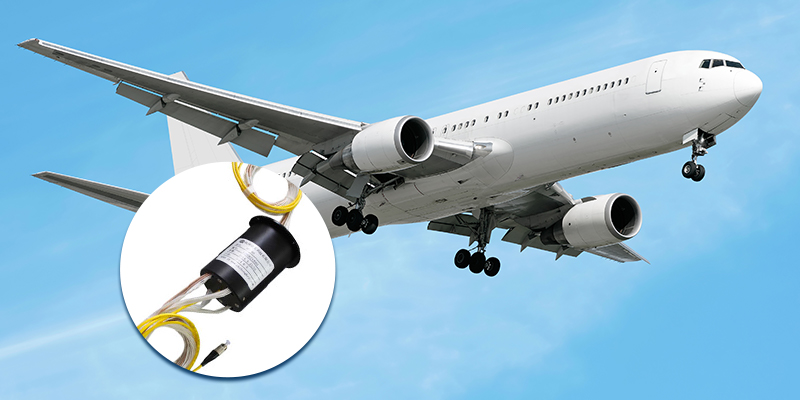
The automotive and aerospace industries are notable beneficiaries of the significant advancements rendered by the application of rotary unions. These vital connectors perform the critical task of enabling fluid, air, or gas transfer under high pressures and severe conditions between stationary and rotating parts. Whether it’s for the cooling of electronic systems in a sports car or the hydraulics in an airplane, rotary unions play a pivotal role in ensuring the optimal performance of complex machinery. By providing robust, consistent, and leak-free connections, they contribute significantly to enhancing operation safety, system reliability, and overall productivity in these industries, thereby highlighting the indispensable role they play in automotive and aerospace advancements.
Rotary unions also find applications in Food and Beverage Industry processing equipment, Wind Turbines, Plastic Molding Equipment, and Defence Systems, demonstrating that the list of industries utilizing rotary unions is broad and continues to expand as more innovative applications are developed.

What Are the Different Types of Rotary Unions?
Rotary Unions come in various types, each designed to cater to particular requirements and applications. The primary difference between these types lies in the number of fluid passages, the types of fluids they transfer, and specific design features for unique industrial needs.
Fiber optic rotary joint (FORJ)
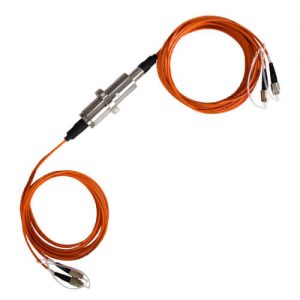
The fiber optic rotary joint (FORJ) is also called the fiber optic slip ring. Optic rotary joints FORJ help to transmit optical communication, like electrical slip rings are used to transmit electrical power and signals. FORJ provides a connection for uninterrupted transmission of optical signals across rotating interfaces. It is especially good for high-speed data transfer on many applications. The key parameters are Insertion Loss, Insertion Loss Variation, and Return Loss.
RF rotary joint
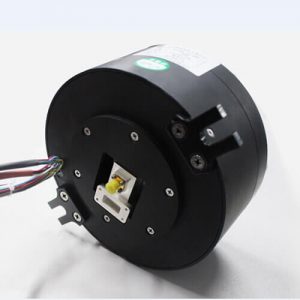
RF rotary joint is the abbreviation of radio frequency, used to transmit radio frequency signals between rotor and stator parts in a rotary system. RF rotary joints can be divided into three types, coaxial rotary joints, waveguide rotary joints, and waveguide to coaxial rotary joints. The possible applications range from radar antennae to military, air traffic control, and space. It is often necessary to receive and send multiple-frequency signals.
Pneumatic/Hydraulic Electrical Rotary Joints
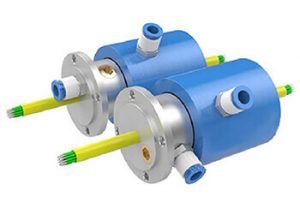
Pneumatic/Hydraulic electrical rotary joints are devices that allow the transmission of electrical signals and power while also accommodating the flow of pressurized air or other gases. Hydraulic electric slip rings are devices that allow the transmission of power and signals while accommodating hydraulic fluid flow. Both consist of a rotor and a stator. Slip rings are customized to meet specific requirements for the number of circuits and the type of gas that needs to be transported.
Pneumatic Rotary Unions
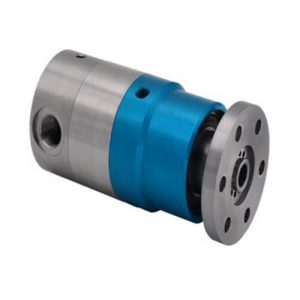
Pneumatic rotary joints, also known as pneumatic swivels, are devices that allow the transmission of compressed air or other gases while accommodating the rotational movement between two components. The Grand pneumatic rotary joint adopts the dynamic sealing technology of NSK high-precision bearings to meet the specific requirements for the number of channels, pressure level, and the type of gas that needs to be transmitted.
Hydraulic Rotary Unions
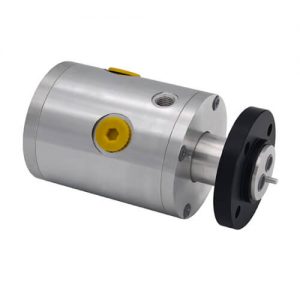
Hydraulic rotary joints, also known as hydraulic swivels, is a device that allows the transmission of hydraulic fluid while accommodating rotational movement between two components. Grand supports customized double high-precision maintenance-free bearing with UKS sealing parts.
Wind Turbine Hydraulic Rotary Joints
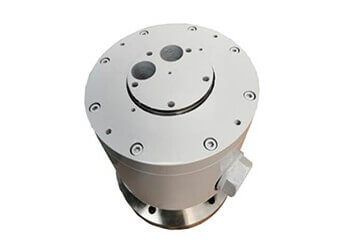
Wind turbine hydraulic rotary joints are specialized hydraulic swivels that are used in wind turbines to transfer hydraulic fluid between the rotating and stationary components of the turbine. Special hydraulic sealing structure designed for high-speed and high-pressure applications.
Advantages and Disadvantages of Rotary Union
Rotary Unions have unique advantages that make them pivotal in certain applications. However, like any other mechanical component, they also have disadvantages that need to be considered before their implementation.
Advantages:
- Versatility: Rotary unions, with their variety of designs and types, can be utilized in a wide range of applications across different industries. From simple single-channel to complex multi-channel and high-speed variants, they cater to unique operational requirements.
- Simultaneous Transfer: Multiple-channel rotary unions enable the simultaneous transfer of different types of fluids (liquids/gases), ensuring efficient and smooth operation in complex systems.
- Combine with Electrical Slip Rings: Hybrid rotary unions combine fluid transfer with electrical power and data transfer, saving space and cost in systems where both are required.
- Flexible Designs: Rotary unions can be custom-designed to accommodate specific requirements, such as size, materials, pressure, temperature ratings, or other unique needs.
Disadvantages:
- Maintenance Requirements: Regular maintenance is crucial for rotary unions to prevent common problems like leakage or blockage. Without appropriate maintenance, their performance can swiftly degrade.
- Wear and Tear: Rotary unions, especially those operating at high speed, can experience considerable wear and tear. This is often due to the constant friction in the rotating parts leading to reduced lifespan.
- Costs: High-end, multi-channel, or custom rotary unions can be quite expensive. Although their benefits often justify the costs involved in industrial settings, they might be prohibitive for some smaller operations.
- Compatibility Issues: Not all rotary unions work with all media types. Some fluids may not be compatible with certain seals or materials used in the rotary union, necessitating careful consideration during selection.
What Are the Characteristics of Rotary Union
Rotary unions exhibit various characteristics that enable them to efficiently transfer fluids between stationary and rotating components in diverse applications and industries. Here are the key characteristics of rotary unions:
Design
There are several designs for rotary unions, including single-channel, multiple-channel, high-speed, and custom variants. This allows for accommodations of different requirements, based on factors like types and numbers of fluids to be transferred, rotation speed, and operating conditions.
Materials
Rotary unions are constructed using various materials to ensure durability and compatibility with different fluids. Common materials include stainless steel, brass, aluminum, and specialized alloys. Sealing materials may range from Nitrile rubber (NBR) to Fluoroelastomers (FKM) and PTFE, based on fluid compatibility.
Seal Types
Rotary unions employ different sealing technologies, such as mechanical seals, O-rings, and hydrostatic seals. Their choice depends on factors like fluid type, pressure, speed, and temperature.
Temperature and Pressure Ratings
Rotary unions have different temperature and pressure ratings, which determine their performance in various conditions. These ratings must be taken into account when selecting the correct rotary union for a specific application.
Fluid Types
Rotary unions can transfer a wide range of fluids. They can accommodate liquids like water, oil, and coolant, as well as gases like air and steam.
Connection Types
Depending on their application, rotary unions are designed to connect with different types of pipes or fittings, such as threaded, flanged, or clamp-style connections.
Rotation Speed
Rotary unions can accommodate different rotation speeds, ranging from low-speed applications like large drums to high-speed applications like machining centers. The choice of bearing and sealing technologies as well as construction materials play a crucial role in determining rotary union performance at various speeds.
Maintenance
Effective preventative maintenance is essential for rotary unions to ensure their optimal performance and longevity. Maintenance mainly includes periodic inspection, cleaning, and lubrication.
Want to Learn More About Our Rotating Joints? Submit Your Questions Here.
What Is the Standard of Rotary Union
The standards for rotary unions dictate the design, materials, safety considerations, performance measures, and testing protocols. These standards ensure that rotary unions function effectively, last longer, and operate safely.
It’s important to note, however, that there is no single, universally adopted standard for rotary unions. Instead, several industry-specific standards and general mechanical and manufacturing standards may apply.
Here are some aspects to consider:
Materials & Design
Rotary unions are typically constructed from materials like stainless steel, brass, and specialized alloys. The materials must comply with the relevant ASTM (American Society for
Testing and Materials) or ISO (International Standards Organization) standards, e.g., ASTM A276 for stainless steel, and ASTM B16 for brass.
Sealing Technologies
There are standards that specify the characteristics of seals used in rotary unions to prevent fluid leakage. For example, the ISO 3601 series outlines dimensional and material requirements for O-rings.
Fluid Compatibility
The material of the rotary union and the seals should be compatible with the fluid being transferred. This compliance is often directed by industry or application-specific standards. In the food industry, for instance, materials and designs should meet FDA (U.S. Food and Drug Administration) regulations.
Pressure & Temperature Ratings
Rotary unions must be designed to withstand certain temperature and pressure conditions, and their performance against these parameters should comply with the limitations defined by ASME (American Society of Mechanical Engineers) or similar regulatory bodies.
Safety Standards
Based on their application, rotary unions should comply with the relevant safety standards. For instance, in electrical devices, they may need to conform to UL (Underwriters Laboratories) or CSA (Canadian Standards Association) safety standards.
Testing & Quality Assurance
Rotary unions should undergo extensive testing to ensure they meet operational, safety, and longevity standards. This could involve conformity to ISO 9001 quality management system standards or other similar sets of standards.
It’s important to consult with the manufacturer or vendor to ensure that a rotary union meets the necessary standards for its intended application.
Structure of Rotary Union
A rotary union, also known as a rotary joint or swivel joint, is a mechanical device that transfers fluid (liquid or gas) from a stationary source to a rotating component. The structure of a rotary union can be broken down into several main components, which contribute to its overall functionality:
| Composition Name | Introduction |
|---|---|
| Housing | The housing is the main body of the rotary union, usually made from materials such as stainless steel, brass, or aluminum, depending on the application requirements. It encloses all the internal components and provides mounting/connection points. |
| Shaft/Rotor | The rotor is the central, rotating component that connects with the rotating machinery (e.g., a drum, roll, or spindle). It has one or more channels through which the fluid flows. The rotor can be mounted directly to the machinery or coupled through a bearing-supported configuration. |
| Bearing Assembly | Rotary unions typically have bearing assemblies to reduce friction and support the rotor's rotation. These bearings can include ball, roller, or hydrodynamic types, depending on factors like rotation speed and load. |
| Seals | Sealing elements are critical components of a rotary union that prevent fluid leakage between the stationary and rotating parts. Seal types may vary based on application requirements and can include mechanical seals, lip seals, O-rings, and hydrostatic seals. |
| Connection Points | Rotary unions have inlet and outlet connection points for fluid transfer. These points can be designed with various configurations, such as threaded, flanged, or clamp-style connections, depending on the requirements of the system. |
| Retaining Ring | The retaining ring holds the bearing assembly and the seal in place, ensuring proper alignment and secure positioning within the housing. |
| Wear/Thrust Rings | Wear rings (also known as thrust rings) are often used to protect the mating surfaces of a rotary union from excessive wear due to friction. They can prolong the life of the rotary union, enhance performance, and reduce maintenance costs. |
Overall, rotary union structures can differ depending on factors such as the number of channels, the type of fluid being transferred, rotation speed, operating pressures, and temperatures, as well as any required seals and connection points.
What Material Is the Rotary Union Made Of?
Rotary unions are essential for transferring fluids between stationary sources and rotating components. The choice of material for a rotary union is crucial for ensuring compatibility with the intended application and the fluids being transferred. Here’s an overview of the common materials for rotary unions:
| Material Name | Introduction |
|---|---|
| Stainless Steel | This material is widely used in constructing rotary unions due to its resistance to rust and corrosion. It offers high strength and durability, making it suitable for various applications, from food processing to heavy industries. |
| Brass | Brass is another common material used in rotary unions. It offers good corrosion resistance, thermal conductivity, and machinability, which makes it ideal for a wide range of applications and fluid types. |
| Aluminum | Some rotary unions are made from aluminum, which is a lightweight and corrosion-resistant material. Aluminum is often used when weight saving is crucial or when compatibility with specific fluid types is necessary. |
| Other Metals | Rotary unions can also be made from other metals, depending on the application and fluid compatibility requirements. For instance, bronze or plastic rotary unions can be used to handle corrosive fluids. |
In addition to the materials used for the housing and shaft, rotary unions also feature seals made from various materials. Seal materials are chosen depending on the specific application and fluid type. Common seal materials include O-rings and bellows-type designs made from rubber or specialized polymers.
It’s essential to select the appropriate material for a rotary union based on the intended application, fluid type, pressure, temperature, and other operating conditions.
How to Choose the Right Rotary Union
Choosing the right rotary union depends on various factors, each essential for ensuring effective operation, long-lasting performance, and compatibility with your system. Below are key considerations:
Type of Fluid
The type of fluid to be transferred significantly affects your choice. Whether it’s liquid (like water, oil, coolant) or gas (air, steam), the selected rotary union must be compatible with the fluid to avoid corrosion and ensure efficient fluid transfer.
Pressure and Temperature
The operating pressure and temperature of the fluid also matter. The rotary union’s materials and design should be able to withstand these conditions. So, always check these ratings.
Rotation Speed
The rotation speed of the component to which the rotary union will be coupled impacts your choice. Different unions are designed for different rotation speeds, and the speed could affect the union’s seal life and overall efficiency.
Size and Port Configuration
Evaluate your mounting space and port requirements. The size and configuration of the ports in a rotary union should align with your system’s specifications.
Number of Flow Paths
Consider the number of fluids that need to be transferred simultaneously. Multi-channel rotary unions are available if more than one distinct fluid needs to be passed through.
Materials of Construction
The union’s materials should be suitable for the intended application and compatible with the type of fluid used. The material choice affects the union’s durability and resistance to wear and corrosion.
Required Life Span
If your application requires frequent use and long operational periods, choose a rotary union that is known for its longevity. This will require diligent maintenance and high-quality construction and materials.
Budget
Finally, always consider your budget. Rotary unions vary in price based on their capabilities and the technologies they use. Opting for the cheapest option may not necessarily satisfy your operational requirements.
When selecting a rotary union, consulting with manufacturers or suppliers is often advisable. They can guide you toward a rotary union that aligns best with your application demands. There are also other articles on our website detailing What Are the Factors to Consider Before Choosing a Rotary Union.
Where to Buy Rotary Union
| Manufacturer | Website |
|---|---|
| Hangzhou Grand Technology Co., Ltd. | https://www.grandslipring.com/ |
| Deublin | http://www.deublin.com/ |
| DSTI | https://www.dsti.com/ |
| MOFLON | https://www.moflon.com/ |
| Kadant | https://www.kadant.com/en-us |
| GAT GmbH | https://www.gat-mbh.de/en |
| Rotary Systems, Inc. | https://rotarysystems.com/ |
| Ortman Fluid Power | https://ortmanfp.com/ |
Hangzhou Grand Technology Co., Ltd.
A China-based company specializing in slip rings and rotary unions, Hangzhou Grand Technology provides solutions for various industries, including wind energy, robotics, and aerospace. They offer customization services and a wide range of rotary union designs for specific applications.
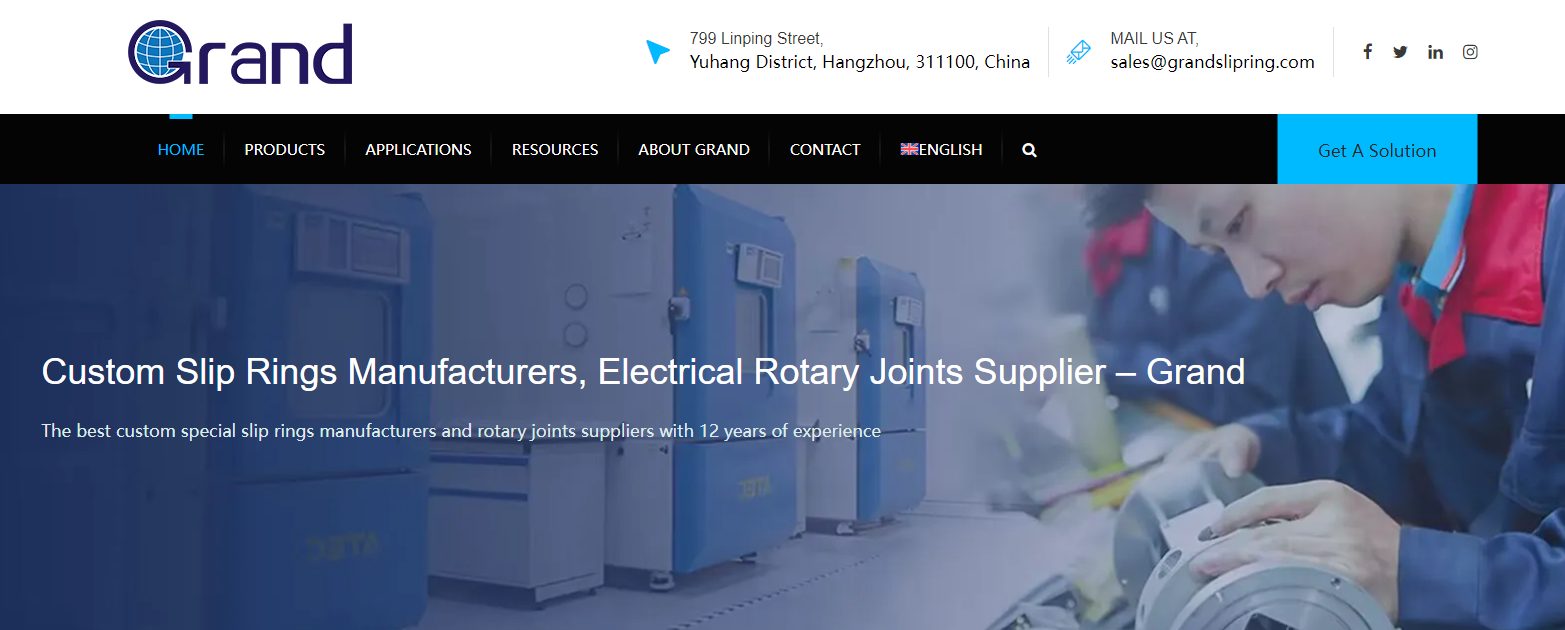
Deublin
A global leader with over 75 years of experience in manufacturing rotary unions, Deublin offers a vast selection of products for various industries, such as metal processing, printing, and plastics. They are committed to quality, innovation, and customer satisfaction.
DSTI
Dynamic Sealing Technologies, Inc. (DSTI) is a USA-based manufacturer specializing in high-performance fluid solutions. They offer a broad range of standard and custom rotary unions for industries like oil and gas, defense, and medical equipment.
MOFLON
MOFLON is a China-based manufacturer of rotary unions, slip rings, and hybrid slip rings, providing customized solutions for various applications. They serve industries such as wind energy, robotics, and medical equipment.
Kadant
Kadant is a global provider of critical process and fluid handling systems. The company offers a wide range of rotary unions for various industries, including paper, steel, and corrugated packaging, focusing on reliability and innovation.
GAT GmbH
A Germany-based company specializing in rotary unions, slip rings, and custom engineering solutions. GAT GmbH offers high-quality, innovative products for demanding applications, serving industries such as marine, machine building, and test systems.
Rotary Systems, Inc.
A USA-based manufacturer of rotary unions and electrical slip rings, Rotary Systems, Inc. offers standard and custom products for various industries, including packaging, machine tools, and medical systems. They focus on customer satisfaction and performance.
Ortman Fluid Power
A USA-based manufacturer of hydraulic and pneumatic solutions, Ortman Fluid Power offers rotary unions for various industries, including food processing, packaging, and plastics. They are committed to providing high-quality products and services.
For more detailed information about rotary union manufacturers, please check Top 10 Slip Ring Manufacturers In the USA Market 2023, Top 10 Slip Ring Manufacturers in China, and Top 10 Slip Ring Industry Key Manufacturers 2023.
Some Important Things About Rotary Union
A Rotary Union is a highly specialized and intricate device with several key considerations. Understanding these can be vital to successfully using them in a wide range of applications. Let’s dig a little deeper into some essential aspects of these mechanical marvels.
Load & Torque
Rotary Unions need to handle different loads and torque based on their applications. Load capacities are essential for unions that are load-bearing or subject to radial or axial loads. Incorrect calculations might result in inadequate performance, failure, or decreased lifecycle.
Maintenance
The core function of a rotary union is the passage of fluids or gases while rotation happens, suggesting that wear is inevitable. Regular check and maintenance schedules are crucial to ensure that the union is operating efficiently and that any wear and tear is managed timely.
Seals
The seal helps to prevent internal leakage and ensures a smooth and reliable passage for fluids. However seal material and design vary in response to changes in temperature, fluid type, and other operating conditions. It’s crucial to understand the seal specifications for optimal performance.
Installation
Incorrect installation can compromise the functionality and lifespan of the rotary union. Failing to align the union correctly, over-tightening connections, or not thoroughly cleaning the system before installation may lead to issues.
Safety Measures
Rotary unions operate under high pressure and temperature, and they often deal with potentially hazardous fluids. Adequate safety measures should be in place during operation and maintenance.
Supplier Support
After-sales support from the manufacturer or supplier is essential. From troubleshooting to maintenance and potential upgrades, having a responsive and competent supplier can make a significant difference.
In summary, to fully leverage the benefits of rotary unions, it’s critical not only to choose the right one but also to install and maintain it correctly, understand its working conditions and limits, and ensure safety in all operations.
Optimize Your Setup with Our Precision Rotating Joints. Contact Us!
Frequently Asked Questions
Q: How often should I inspect my rotary union for wear?
A: It depends on the specific application, but a general rule of thumb is to inspect your rotary union at least once per year or when you experience fluid leakage.
Q: Can a rotary union transfer both liquid and gas simultaneously?
A: Yes, a multi-channel rotary union can transfer multiple fluids, including both liquids and gases, simultaneously.
Q: Can I customize a rotary union for my specific application?
A: Yes, many manufacturers offer custom solutions to meet their customer’s unique requirements.
Q: How do I determine the right size for my rotary union?
A: Consult the manufacturer or refer to application-specific guidelines to determine the appropriate size.
Q: What is the difference between a radial seal and a face seal in a rotary union?
A: A radial seal seals radially around the rotating shaft, while a face seal seals axially, making contact between the rotor and stator faces.
Q: How do I minimize wear and tear on my rotary union?
A: Regular maintenance and proper alignment during installation can help to minimize wear and tear.
Q: What are the most common failure modes for rotary unions?
A: Common failure modes include seal failure, bearing failure, and misalignment.
Q: Can a rotary union handle high-pressure applications?
A: Yes, high-pressure rotary unions are designed specifically for applications with high pressure.
Q: Can a rotary union be used for high-speed rotation?
A: Yes, there are high-speed rotary unions specifically designed for high-speed applications.
Q: Is there a specific standard for rotary unions?
A: No, there is no specific standard for rotary unions. However, industry-specific standards may apply to design and construction.
Getting to grips with the vital aspects of a rotary union such as its use cases, types, characteristics, and maintenance tips can contribute significantly to enhancing operational efficiency while minimizing wear and tear. Opting for the right rotary union aligned to specific needs and periodic maintenance are key to leveraging its longevity and superior performance. It’s indeed an indomitable solution for complex fluid transfer.
See What We Can Do

